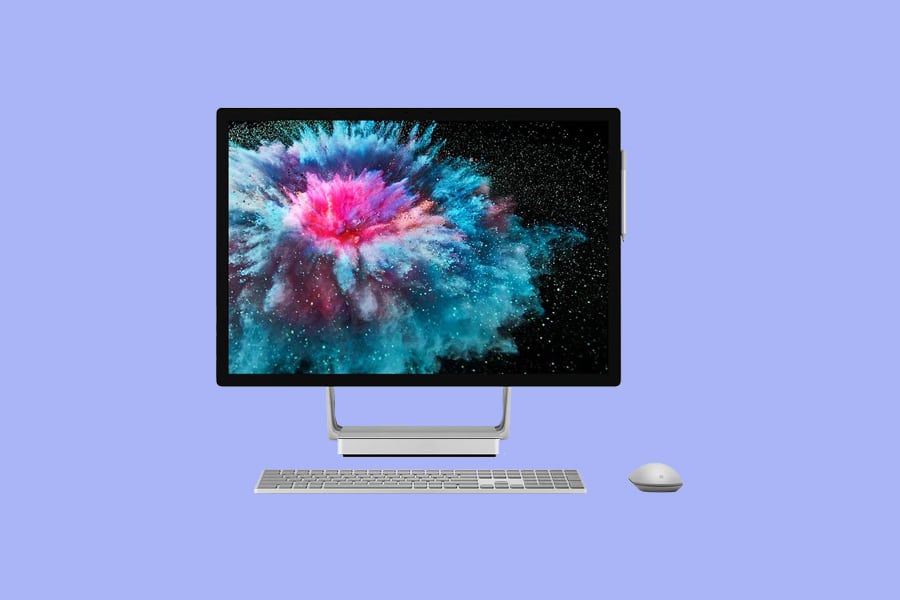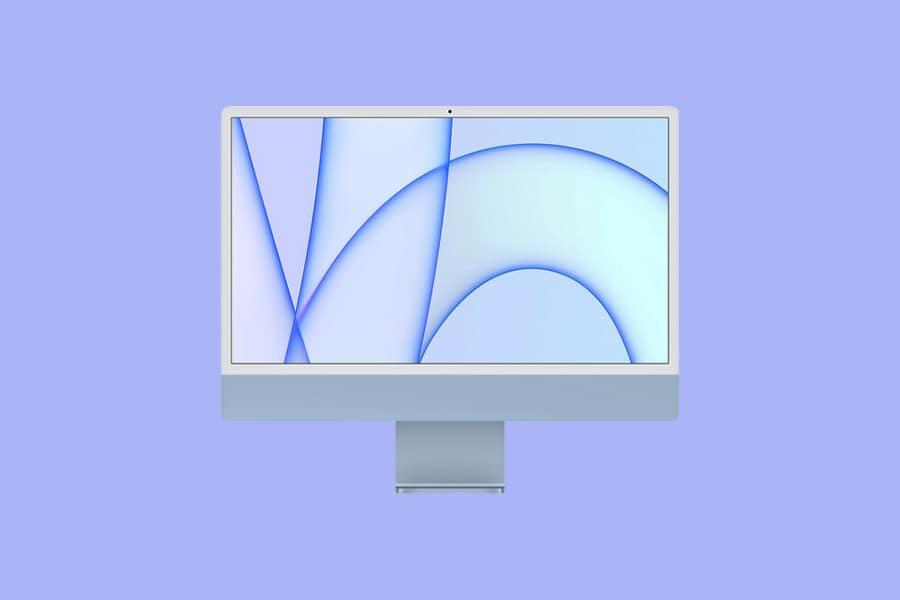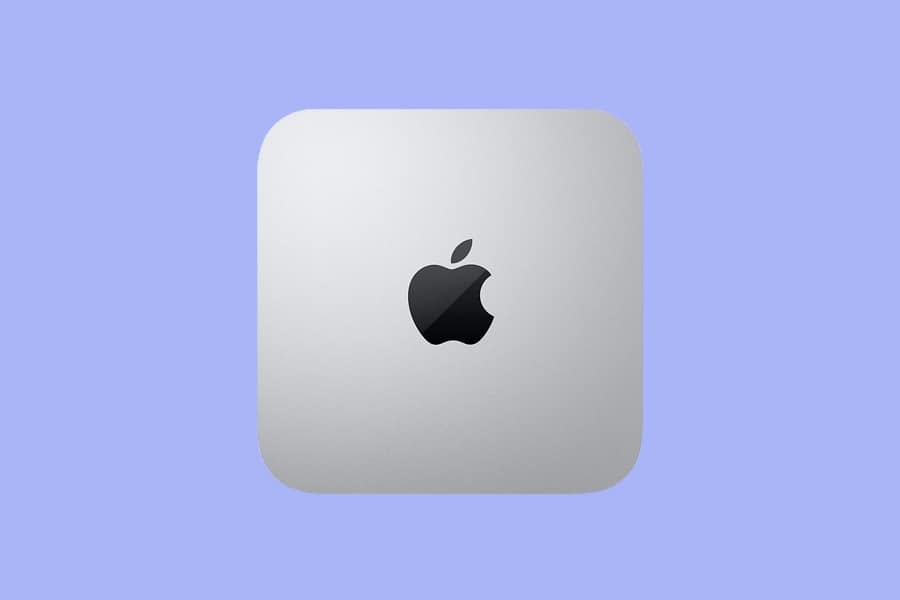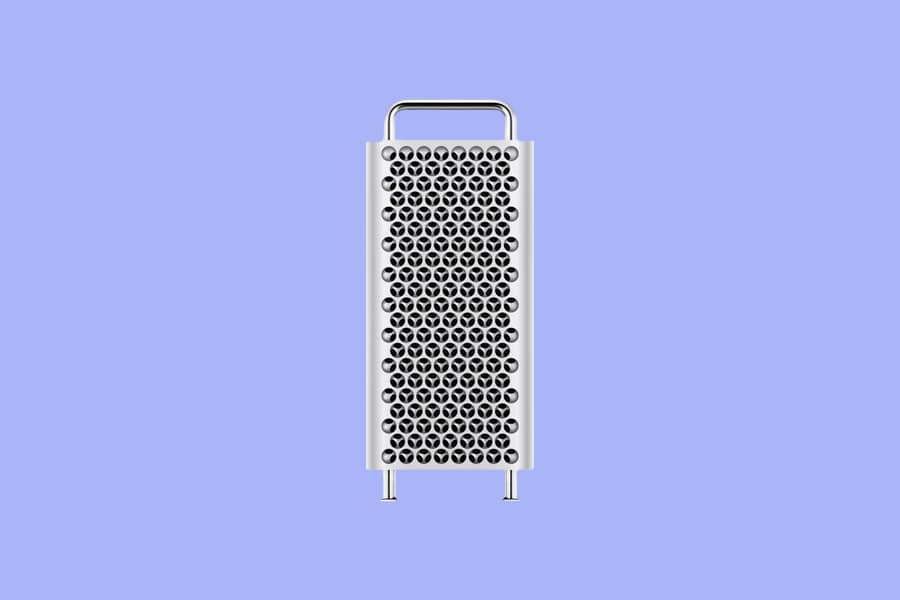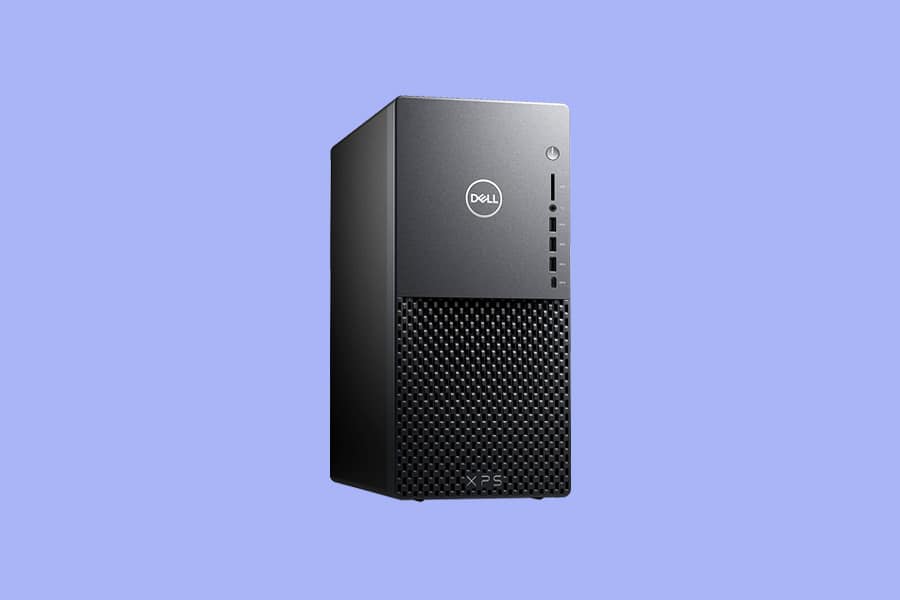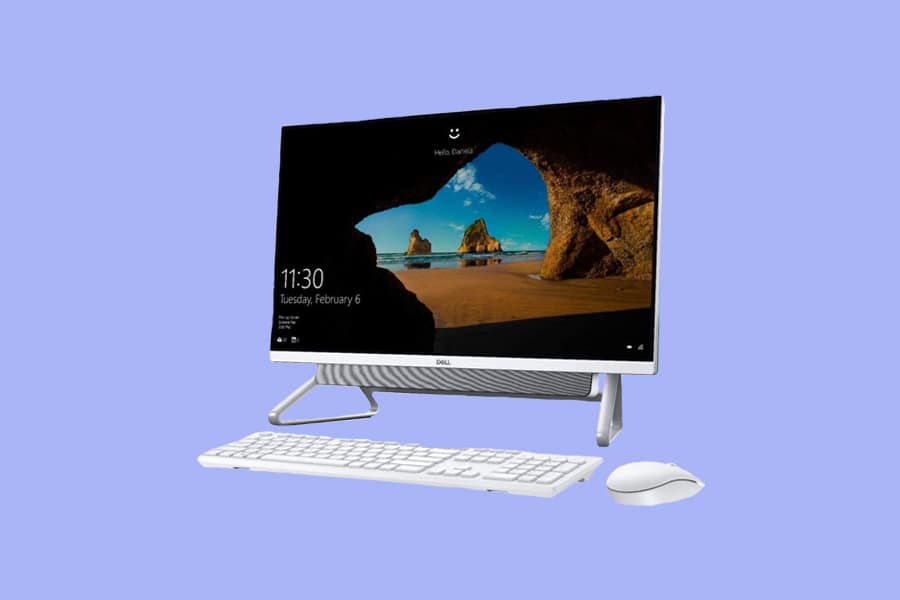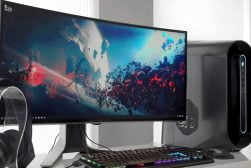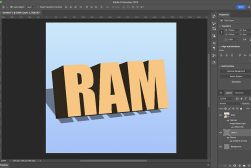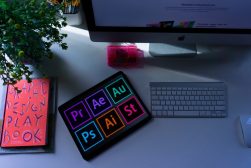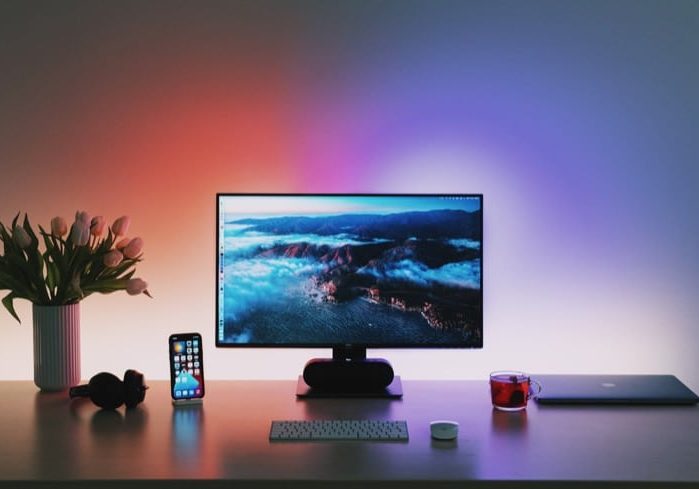
Best Computer for Graphic Design in 2024 (Mac & PC Desktops)
If you're a graphic designer who needs the best Mac or PC in 2021, this guide will show you the top models available and what to look out for when buying.
In this guide, you’ll discover the best computer for graphic design for Mac and PC users.
Whether you’re a professional graphic designer or a hobbyist, we’ll show you the top models of the year.
(We’ve also included exactly what to look for so you can buy with confidence.)
Powerful, reliable and excellent value for money - the number one choice for professional and amateur graphic designers.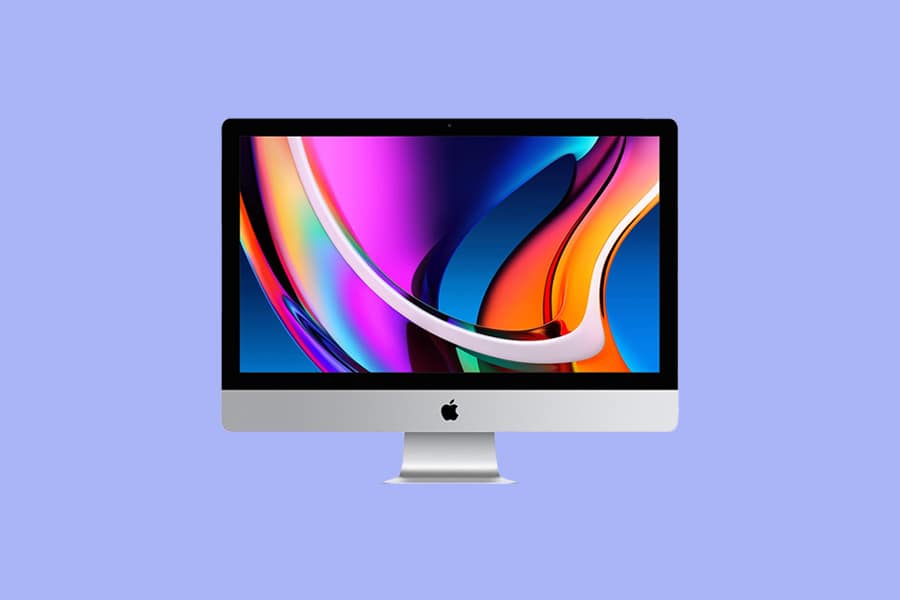
![]()
Laptops and tablets might be convenient, but desktop computers are the top choice for most graphic designers due to their all-in-one setup.
Desktops also provide the best bang-for-your-buck, and some even include pre-calibrated monitors that make the most of all the most popular graphic design software.
The best graphic design computers also need to handle the myriad of other tasks that come along with being a creative professional, including video editing.
Let’s dive into the recommendations!
Best Computer for Graphic Design in 2024
Image
Product
Features
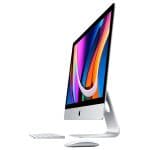
Apple iMac 27"OUR #1 CHOICE View Price → 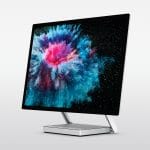
Microsoft Surface Studio 2HIGHLY RECOMMENDED View Price → 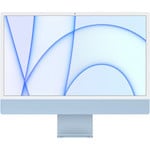
Apple iMac 24" (M1 Chip)TOP RATED View Price → 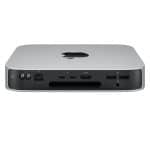
Apple Mac Mini (M1 Chip) View Price → 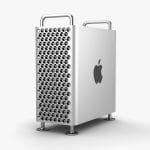
Mac Pro View Price → 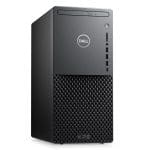
Dell XPS 8940 View Price → 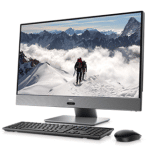
Dell Inspiron 27 7000 View Price →
Apple iMac 27″
- Excellent 5K Retina display
- Powerful configuration options
- High-quality HD webcam
- Smooth and reliable operating system
- Limited Thunderbolt ports
- No M1 Pro chip
Apple has long had a reputation among professional graphic designers for producing reliable, high-quality computers, and their flagship Apple iMac 27″ Apple desktop computer is no exception.
Straight out of the box and the quality of this all-in-one PC is clear, sporting Apple’s customary elegant and sleek design, and the minimalist wireless look for those who prefer their desks uncluttered.
The Apple iMac 27″ comes with the Magic Mouse 2 and Apple Magic Keyboard along with the computer, and there’s also a 1080p FaceTime HD camera with a studio-quality triple microphone array included in the package.
Underneath the hood of this iMac computer sits some impressive hardware, with a powerful Intel Core i9 processor alongside an AMD Radeon Pro 5000 GPU to ensure exceptional performance for even the most demanding of graphic design tasks.
This graphical clout is ably assisted with 16GB of GDDR6 memory as standard, with the option to upgrade this to 128GB if you’re anticipating dealing with memory-intensive workflows, or simply wish to future-proof the set-up.
Where the iMac 27″ truly excels is with its monitor, an exceptional 5K Retina display that reproduces colours with eye-popping clarity and hue and captures every vivid detail to perfection.
While the Apple iMac 27″ Mac desktop may lack the customisable options found with Windows-based desktop PCs, it makes up for it with outstanding responsiveness with no lag even under the most processor-intense design situations.
Indeed, the only real shortcoming with the Apple iMac 27” aside from its restrictive customisation options, is the limited number of Thunderbolt ports – there are just two to work with.
(Purchasing a ‘hub’ to provide more ports is advisable, and fortunately, inexpensive.)
The inevitable release of the M1 chip for this 27″ Apple computer version will likely be a game-changer, but until that day arrives, this remains the best computer for graphic design you can buy here in 2024.
Microsoft Surface Studio 2
- Touch-sensitive surface pen
- Powerful graphics card
- Adjustable viewing angle for digital drafting
- Nice and bright display
- Very expensive
- Speakers are weak
If you’re looking for a powerful all-in-one computer for graphic design but aren’t committed to the Apple ecosystem, the Microsoft Surface 2 PC is perhaps the closest rival you’ll find to Apple’s flagship computers.
Powered by an Intel Core i7 processor and with 16GB-32GB of RAM, it includes an Nvidia GeForce GTX 1060 or 1070 GPU which offers plenty of power for most graphic design work, with more than enough storage space in the 1TB SSD card (with 2TB available in the upgraded package).
The touch-sensitive 28″ monitor makes the Microsoft Surface Studio 2 an ideal choice for graphic artists who would prefer to avoid the additional cost of a graphics tablet, with great responsiveness using the Surface Pen stylus.
Brightness and contrast provide enhanced levels of detail to images, with excellent colour depth ensuring your digital drawings are reproduced with accuracy and clarity.
The monitor is also mounted on a vertical hinge, making it easy to adjust the viewing angle depending on whether you’re using it as a drawing desk or orienting it for regular use.
There’s also the option to instantly switch between colour modes, alternating between sRGB to vivid and DCI-P3 profiles with excellent display calibration throughout.
Microsoft has also included their Windows Hello camera in the package, a 5MP (1080p) webcam which features infrared sensors for facial recognition, registering your face in less than a second to grant access to the desktop.
Microsoft’s Surface Studio 2 is the best graphics design PC for Windows currently available, and while its high price may be off-putting for some, for professionals who need digital drafting capabilities it’s a tough product to beat.
Apple iMac 24″ (M1 Chip)
- Gorgeous design
- Solid performance
- High-quality screen
- M1 chip is rapid
- Lack of ports is an issue
- More expensive than an M1 Mac Mini
Returning once again to Apple for the iMac 24″, which sacrifices a few inches in screen size over the iMac 27″, but compensates for this with the introduction of Apple’s revolutionary M1 Chip.
The Apple M1 Chip drives the performance of the iMac 24″ to the next level by integrating the CPU, GPU, Neural Engine, and more into a single system and streamlining its processing power.
This also means you get a slimmer computer, with the iMac 245″ thinner and lighter than its predecessors and delivering an all-round sleek package when combined with the Magic Keyboard, Mouse, and Trackpad.
There’s even a fingerprint Touch ID scanner included with the keyboard, which makes authenticating software installs a breeze and spares users from having to type in their password each time they install something from the App Store.
The bulging build of the previous iMac has been replaced with a flat chassis, with slimmer bezels around the screen and a lower profile on the stand making this an altogether more discreet version that will take up minimal desk space.
With the option of 8GB to 16GB of unified memory and up to 2TB of storage, graphic designers will find the 24″ iMac handles most tasks with ease, backed up with the quick and efficient macOS Big Sur operating system.
The included 4.5K Retina screen serves up images in gorgeous high definition and looks even more striking thanks to Apple’s overall clean design, with seven colour options available to choose from.
As with other Apple products, there are some issues with the availability of ports, including the loss of an SD card slot and a limited number of Thunderbolt ports which some users may find frustrating.
With the iMac 24″, Apple has delivered a slimline computer for graphic designers which looks fantastic while delivering a level of performance suitable for most graphic design projects.
Apple Mac Mini (M1 Chip)
- Compact and portable
- Includes the M1 chip
- Beautiful design
- Solid performance
- Maximum 16GB memory
- Fewer Thunderbolt 3 ports
Graphic designers on a budget who still prefer to work within the Apple ecosystem can get the best of both worlds with the Apple Mac Mini, which delivers the same M1 hardware performance as the iMac but at a fraction of the price.
While the Apple Mac Mini isn’t an all-in-one computer, which means you’ll need your own monitor to hook up to it, it’s still a punchy computer with plenty of processing power to meet the demands of professional graphic designers.
In addition to the M1 chip with an 8-core CPU and 16-core Neural Engine, the Mac Mini includes a 256GB SDD to deliver responsive performance, whether you’re editing images, rendering videos, or playing games.
The Apple Mac Mini runs on Apple’s Big Sur operating system, with Rosetta 2 running in tandem to help keep things running smoothly and give it a similar level of performance to the MacBook Pro and MacBook Air.
Aesthetically, the Mac Mini lives up to its name, coming in the same compact box as previous iterations, which makes it ideal for graphic designers who want to take their studio on the go.
Perhaps the most notable update comes with the ports on its exterior, which are grouped on the back of the chassis, and again suffer from a reduction in Thunderbolt ports, with only one Thunderbolt port available for displays.
Overall, the Apple Mac Mini delivers an affordable portable computer for graphic design professionals, taking the classic Mac Mini design and boosting performance with the inclusion of the M1 chip.
Mac Pro
- Excellent performance
- Great speed
- Runs silently
- Perfect for high-end processor-intensive work
- Very expensive
- No updates since 2019
Apple’s flagship computer, the Mac Pro, offers outstanding performance with cutting-edge components for the most discerning graphic designer, rivalling the best computers on the market for those who can afford its exceptionally high price.
The core features include a 3.5 GHz Intel Xeon W Eight-Core processor running a Radeon Pro 580X GPU, housed in a sturdy aluminium casing that can be easily removed for quick access to the interior.
This modular tower system gives the Mac Pro a greater degree of reconfiguration possibilities than many of their other products, and the option to upgrade the existing CPU, RAM, and hard drive well beyond the standard package.
While the basic version of the Mac Pro will set you back a little under $6,000, increasing the specifications will potentially send your budget skyrocketing, with a fully maxed out rig including a 2.5GHx 28-core Intel Xeon with 192GB RAM weighing in at well over $20,000.
Fortunately, you don’t need to go all-in to get incredible performance from the Mac Pro, and it also comes with a 27-inch LED backlight high-resolution Retina display, ensuring the best possible image quality for your graphic design work.
There are plenty of connection options here, with 4 Thunderbolt 3/USB-C ports as well as a 10 GB Ethernet port, 4 USB 3 ports, and an SD card port, giving the Mac Pro a versatility that is lacking in their cheaper products.
The overall impressive performance is matched by its range of advanced features which many graphic designers working on high-level projects will appreciate, but are probably overkill for more general graphic design use.
The Mac Pro is a high-end workstation that comes at a high price, but for those who can afford it and require the very best performance in their graphic design computer, it’s one of the best products you can buy. It’s also the best all-in-one computer for video editing.
Dell XPS 8940
- Very good performance
- Compact casing
- Highly configurable
- Lots of ports
- Basic keyboard and mouse
- Won’t fit cards larger than RTX 3070
With gaming PCs offering ever-increasing power under the hood, graphic designers are adopting these computers such as the Dell XPS 8940 to use for their professional work.
Offering a highly customisable system with impressive out-of-the-box specifications, Dell’s XPS 8940 delivers a solid build with a variety of configurations to meet the requirements of a powerful graphic design computer.
It comes with an Intel Core i7 processor and Nvidia GeForce GTX 1660Ti graphics card, making it just as capable of running software from Adobe’s Creative Suite as it is functioning as a dedicated gaming PC.
Rendering in Premiere Pro and Solidworks is quick and efficient, aided by the fast 512GB SSD, and there’s ample space for storing your files and backups on the 1TB hard drive.
Dell has done an excellent job with the design of the XPS 8940, delivering an office-friendly casing in a compact form with plenty of ports on the front to make it accessible and versatile.
The crosshatch pattern on its front panel doubles up as a ventilation system, and the computer comes in either black or which, so you can choose the colour which best blends in with your other hardware.
The XPS 8940 a solid PC with a surprising amount of heft on offer considering the relatively small and minimalist casing, and a great computer for graphic design, photo, and video editing.
Dell Inspiron 27 7000
- Affordable price
- VR ready
- Nice quality peripherals
- HDMI input
- No height adjustment
- CPU is basic
The Dell Inspiron 27 7000 lacks the bells and whistles of the high-end computers dedicated to more intensive tasks, but for aspiring designers looking for an entry-level machine to get them started, it offers great value for money.
An all-in-one computer that comes with a 27″ monitor on a tilt-adjustable stand, it’s powered by a quad-core Intel Core i5-10210U processor, with 8GB of RAM as standard and the option to increase this to 12GB for a quicker user experience.
While it’s certainly not going to set any speed records, it’s still a capable computer that will handle basic image editing and graphic design software, along with general use including web browsing and watching movies.
Sadly, Dell discontinued the all-in-one’s 4K resolution screen option, so what you get here is a standard HD image at 1920 by 1080 pixel resolution, although the image is still sharp and vibrant and should be more than adequate for hobbyist designers looking to play around with the software.
There’s also the option to upgrade to the touch screen version of the monitor at an additional cost, although this won’t have the degree of sensitivity and accuracy found in a dedicated graphics monitor.
The peripherals included are all well-built and comfortable to use, and there’s also a retractable webcam that can be easily pushed down into the chassis when not in use (although if you’re using Windows Hello facial recognition to log on the camera will be active most of the time).
Industry professionals aren’t going to get the dedicated power and memory required for complex workflows with the Dell Inspiron 27 7000, but for those who want to dip their toes in the world of graphic design without investing a fortune, it’s a budget-friendly AIO computer suitable for basic design tasks.
How to Choose a Desktop for Graphic Design
There is a range of specification considerations to cover when putting together a desktop computer for graphic design.
Each of these will factor into how well the computer performs, as well as whether it future proofs your set-up in case you wish to move on to more advanced workflows in the future.
Let’s break these factors in more detail, so you know what to look for when choosing the best computer for graphic design that remains within your budget.
- Processor power (CPU)
The central processing unit (CPU) serves as the brain of your computer, so you’ll need to make sure your processor is up to the task of running your choice of graphic design software. Photoshop, Illustrator, and other software packages will detail their minimum specification requirements to run smoothly, so find out what processor is required to make sure it’s up to the task.
Generally speaking, for graphic design work you should aim to use a processor with a minimum 2Ghz quad-core processor.
- Operating System
There are two main operating systems to choose from when putting together a computer for graphic design. These are Windows and MacOS.
We’ve covered this in detail below, so scroll down to find out more about MacOS versus Windows when choosing which one to opt for.
- Graphics card (GPU)
Graphic design work can often involve using large files which require intensive processing, and this is where a good graphics card is essential.
You should invest in a graphics processing unit (GPU) that is capable of handling 4K images (and videos), and processing the image and video files you’re manipulating with ease.
- RAM memory
The amount of RAM installed on your computer will influence how fast and responsive your graphic design software is. As a good rule of thumb, the more RAM you have, the quicker your computer will be.
More RAM will also improve how well your computer handles multitasking, running multiple programs at the same time without slowing down performance.
The amount of RAM required for graphics design software varies, so you should check the requirements of the software you’re looking at using.
For example, Affinity Photo and similar lightweight Illustrator alternatives recommend 2GB RAM, while Adobe Photoshop and Illustrator recommend a minimum of 8GB.
More intensive video editing and effects software such as Adobe After Effects and similar software require at least 16GB of RAM to run smoothly.
- Disk storage
To save any work you’ve done, you’ll need a suitable amount of disk storage on your computer. There are two main types of hard drives you can use for this purpose: hard drives and solid-state drives.
While both work in essentially the same way, there are differences worth noting.
A hard drive is the cheaper option and can offer a much larger amount of storage space than a solid-state drive.
Solid-state drives, while more expensive and capable of holding less information, are more durable than hard drives.
The main advantage of solid-state drives is the speed. Solid-state drives lack the moving parts which makes traditional hard drives slow, and a computer with the operating system located on an SSD will boot much faster.
Likewise, if the files you’re using for graphic design work are stored on an SSD they will load into the software much faster and reduce the potential for lags while you work.
- Monitor
Some computer set-ups come with a monitor included in the package, for instance, the all-in-one computers mentioned above.
Some, however, only come with the computer tower and mouse/keyboard peripherals, in which case you’ll need to invest in your own monitor to go with them.
When choosing a monitor for graphic design work, make sure this is at least 4K resolution.
If you have the budget, pick up a monitor with in-plane switching (IPS), since these have better colour and viewing angles.
- Software
The software you choose to work on for your graphic design projects is another factor to consider when budgeting for your setup.
There is plenty of free-to-use software you can start out with such as GIMP and Microsoft Paint (which comes pre-installed on Windows-based computers), although professional standard software will require payment to use.
Some software, such as Adobe’s Creative Cloud suite, will require a monthly subscription, and come in a range of packages that you can tailor to your needs.
There is also software you can buy with a one-off payment, for example, Paintstorm Studio. You can sometimes get a free trial version, so if this is the case you should take advantage of the offer to try the software out before you commit to a subscription.
- Price
Lastly, the computer you choose should be within your budget range and include enough features to ensure it can perform to your requirements.
If you’re a professional designer, you’ll need a higher spec set-up than if you’re just starting out.
If you’re investing in a Windows-based computer, remember that you will have the option to upgrade your computer’s components down the line should you wish to give your system more power.
Is Mac or PC Better for Graphic Design?
The debate around whether or not Macs and better than PCs for graphic design has been raging for as long as the two platforms have existed, with persuasive pros and cons for both sides of the argument.
One of the main justifications for opting for Mac over PC is on account of its broad adoption throughout the design industry.
The simplicity of its operating system, combined with its high build quality, lend professionals an assurance of reliability and quality. If you’re already in Apple’s product ecosystem, you’ll also benefit from the interconnectivity the brand offers across its range of devices.
Designers who focus primarily on UI/UX design also tend to favour Mac products due to the industry-standard tools found on this platform, as well as access to programs such as Sketch, which are exclusive to macOS.
The general handling of colours, fonts, and type is superior on Macs since the company has a long history of focusing on these aspects of design and refining how these elements are handled.
The graphic design-related accessories available for Mac are also exceptionally well-made, including their Magic Mouse, pencil, and trackpad, which combine simplicity and functionality at a level rarely found with traditional PC peripherals. This also makes Macs particularly suited for photo editing software.
On the other hand, there is a range of benefits for graphic designers working on PCs that are worth considering, from open-ended customisation and a broader range of accessories to the generally lower price points to get set up with a good graphic design rig.
PCs are more versatile, and if you want a computer that can perform more tasks, for instance, gaming, then opting to go for a PC will give you options you won’t find with a Mac.
You’ll also find software that was formerly only available on Mac has since become available on PC, reducing the edge Mac hardware previously had over PCs, with most major programs now developed for both platforms.
Ultimately, the choice you make will come down to the budget you have at your disposal, the format requirements of potential clients, and how versatile you want your desktop computer to be in the long run.
Computers for Graphic Design FAQs
How much RAM do I need for graphic design?
Depending on the software you intend to use, a minimum of 16GB of RAM is usually recommended to perform graphic design tasks. If you’re planning on using software from the Adobe Creative Suite, you should consider increasing this to 32GB or higher.
Is a gaming computer the best computer for graphic design?
While gaming PCs aren’t designed with graphic design as a primary function, the high specs demanded from modern games make them perfect for graphic design use. Indeed, many games industry professionals who work on game graphics and other design elements will use a high spec gaming computer to perform their work.
Is Ryzen good for graphic design?
Ryzen produces a range of processors which are fine for graphic design, with some of their products outperforming Intel.
Which Ryzen processor is best for graphic design?
There are a variety of Ryzen processors which work well for graphic design, including the Ryzen 5 5600X, and the Ryzen 5 3500U. These will run Photoshop, InDesign, and Illustrator without any issues.
Is Ryzen better than Intel for graphic design?
Both AMD and Intel produce processors which are adequate – and excellent – for graphic design, depending on the model and the budget range. AMD Ryzen is considered to have a better price-performance ratio, with better multi-core threaded performance.
Why do graphic designers prefer Macs?
Graphic designers tend to prefer Macs because they offer industry-standard hardware and software, with a simple and intuitive operating system and excellent build quality. Compatibility across their various products also means graphic designers can become invested in the Apple ecosystem, giving them additional versatility over how and where they can work.
Final Words
We’ve covered a broad selection of computers for graphic design, from all-in-one computers offering a versatile approach to workflow to high-end workstations at the top of the budget spectrum and used by professional graphic designers.
As new computers continue to emerge the best options for amateur and professional designers will continue to change, so be sure to check back for the latest updates.
If you have any recommendations for excellent computers or agree/disagree with our choice of the best computer for graphic design of 2024, feel free to post them in the comments.
Powerful, reliable and excellent value for money - the number one choice for professional and amateur graphic designers.
![]()





